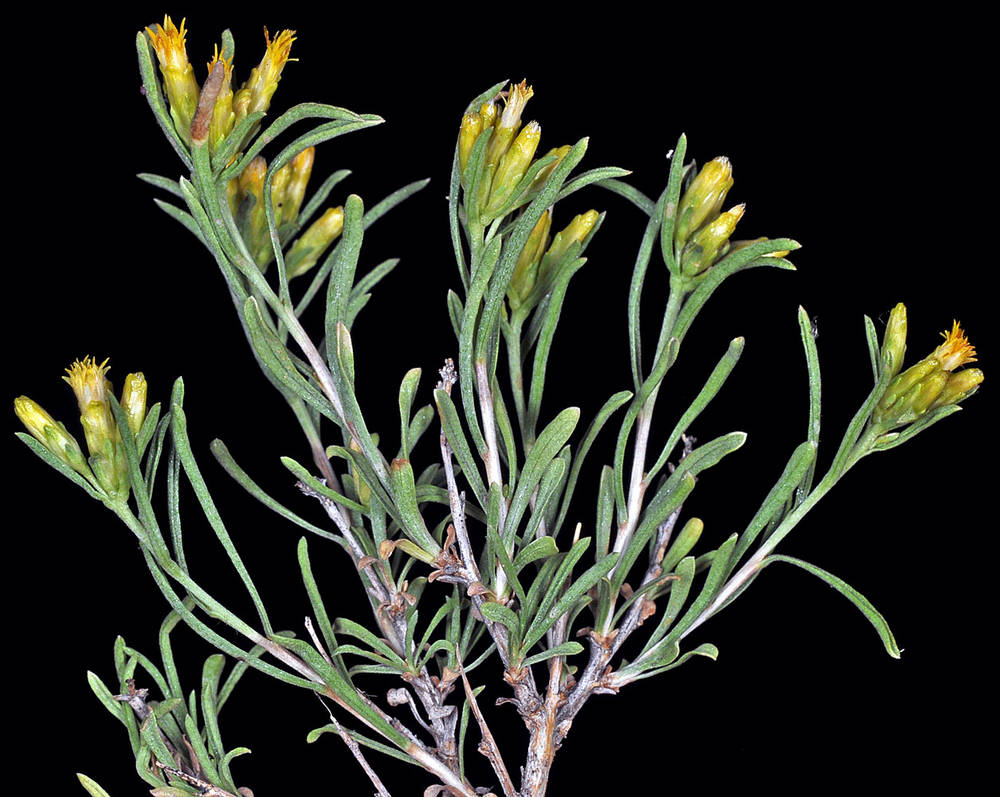Chrysothamnus humilis
Chrysothamnus
Truckee rabbitbrush
rabbitbrush
main stem often branched; woody, herbaceous stems usually erect, unbranched below inflorescences, sometimes persistent and branched second year, glabrous or puberulent, sometimes minutely glandular distally.
linear to oblanceolate, 0.5–3 cm, usually 1-veined from bases;
surfaces minutely spiculate-puberulent, adaxially sometimes glandular, sessile.
cauline, alternate, broadly or narrowly linear to lanceolate;
margins entire;
tips acute;
surfaces glabrous to puberulent, adaxially sometimes minutely glandular or viscid, sessile.
some clusters equaled or exceeded by 1 or more of the terminal leaves;
peduncles (when present) minutely puberulent.
panicle-like arrays, glabrous to puberulent or minutely glandular;
peduncles present or not.
6–8 × 3–4 mm.
cylindric.
convex;
paleae 0.
2–3(4);
corollas 6–8 mm;
style branches included or slightly exserted.
bisexual;
corollas tubular, gradually widened distally, yellow;
lobes 5, triangular; erect or spreading, included to well exserted from involucres;
stamens well exserted;
stigma lobes included or exserted.
oblong to linear-lanceolate;
tips obtuse or acute;
surfaces glabrous or outer slightly puberulent.
in 3–6 unequal series; erect, spreading in fruit, chartaceous; midribs obscure;
surfaces glabrous or puberulent.
3–6 mm; reddish brown, densely strigose;
pappus bristles 2.5–4 mm, white or tan.
cylindric, truncate, tapering toward base, obscurely veined, pappi of numerous equal bristles, often a few outer bristles are shorter.
discoid.
ascending or erect, minutely spiculate-puberulent.
=18.
Chrysothamnus humilis
Chrysothamnus
Brushlands, grasslands. Flowering Jul–Sep. 900–3000 m. BR, BW, ECas, Owy. CA, ID, NV, WA. Native.
In this treatment, Chrysothamnus humilis is limited to plants with at least some of the inflorescence clusters equaled or overtopped by one or more of the terminal stem leaves. Plants resembling C. humilis but with the heads standing well above the upper leaves are better placed in C. viscidiflorus ssp. puberulus.
Western North America. 9 species; 2 species treated in Flora.
Following Roberts and Urbatsch (2004), three groups of species of Chrysothamnus have been segregated into Ericameria, Loranandersonia, and Cuniculotinus, of which only Ericameria occurs in Oregon.
Kenton Chambers
Kenton Chambers



